Are you familiar with the bag pack used in Japan called Randoseru?
Randoseru is a traditional square backpack used by Japanese elementary school students to go to school. It is an item deeply rooted in Japanese educational culture and means more than just a bag.
This article will help you learn more about the Japanese randoseru culture!
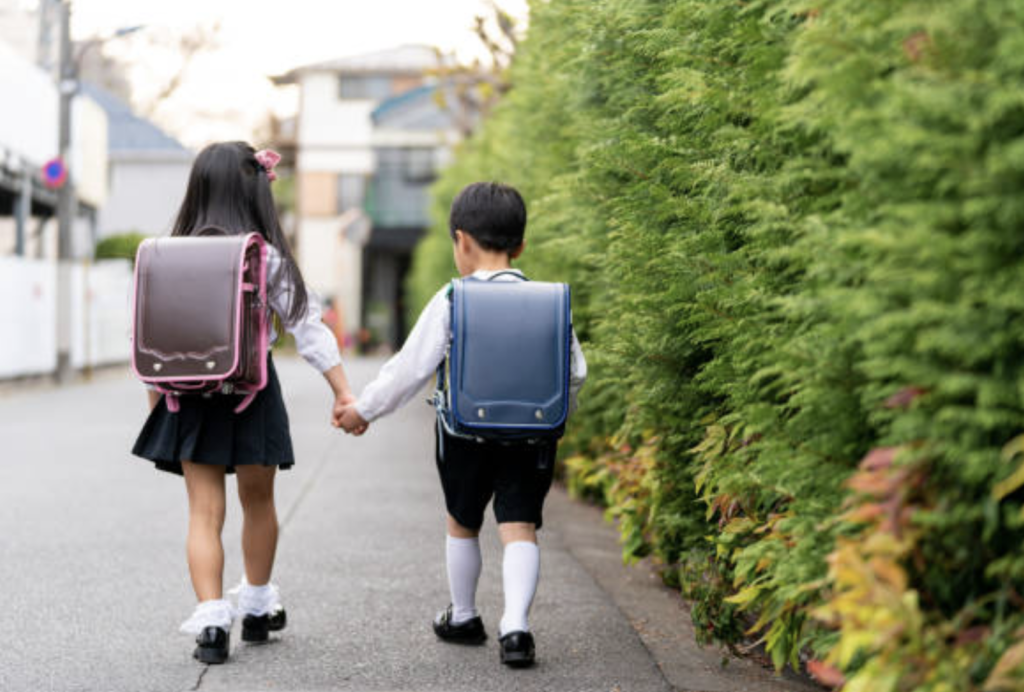
Contents
Overview
Randoseru are generally purchased when children enter elementary school. Although elementary school in Japan lasts for six years, randoseru are often used throughout the six years from enrollment until graduation, and are a symbol of learning at elementary school for the child.
In many families, there is a symbolic moment when the randoseru is handed from parent to child on the day of the entrance ceremony, and it is used carefully as the child grows up.
Randoseru used in Japanese elementary schools are unique and not often seen in other countries.
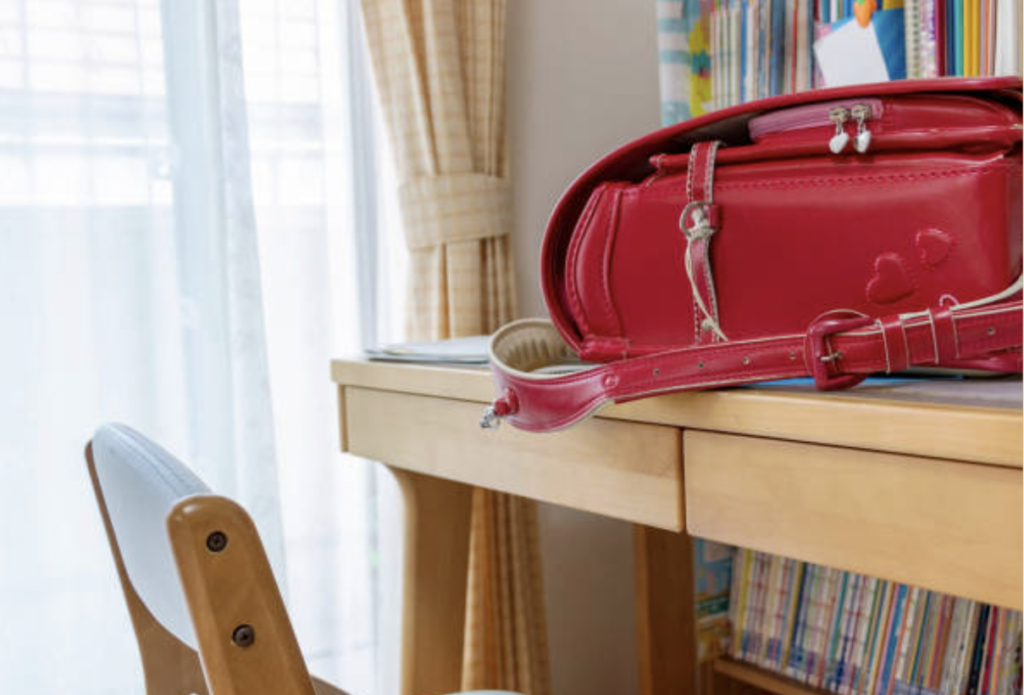
History and Etymology of Randoseru
Randoseru were originally introduced to Japan from the West during the Meiji period (1868-1912). Initially modeled after military backpacks, they gradually became common as school bags for elementary school students.
The word “randoseru” is actually derived from the Dutch word “ransel”. The word “ransel” means “backpack” or “rucksack,” and it is said that the word “randoseru” came to be used in Japan during the Meiji period (1868-1912).
New Culture “Rankatsu”
As of 2025, a new culture called “Rankatsu” (Randoseru Erabi Katsudo = Choosing and buying a randoseru after much consideration) is emerging in Japan. It is a culture in which children and their parents enjoy the process of choosing a randoseru together, especially in the year before entering elementary school.
The importance of selecting randoseru is increasingly recognized as more than just a shopping experience; it has become an important event that celebrates a child’s growth. Traditionally, school bags have been selected primarily by color and design, but today there are an increasing number of choices that emphasize lightness, durability, and functionality.
In addition, to reflect children’s individuality, color variations, embroidery options, and even custom-made randoseru are gaining popularity (but are expected to be quite expensive…!).
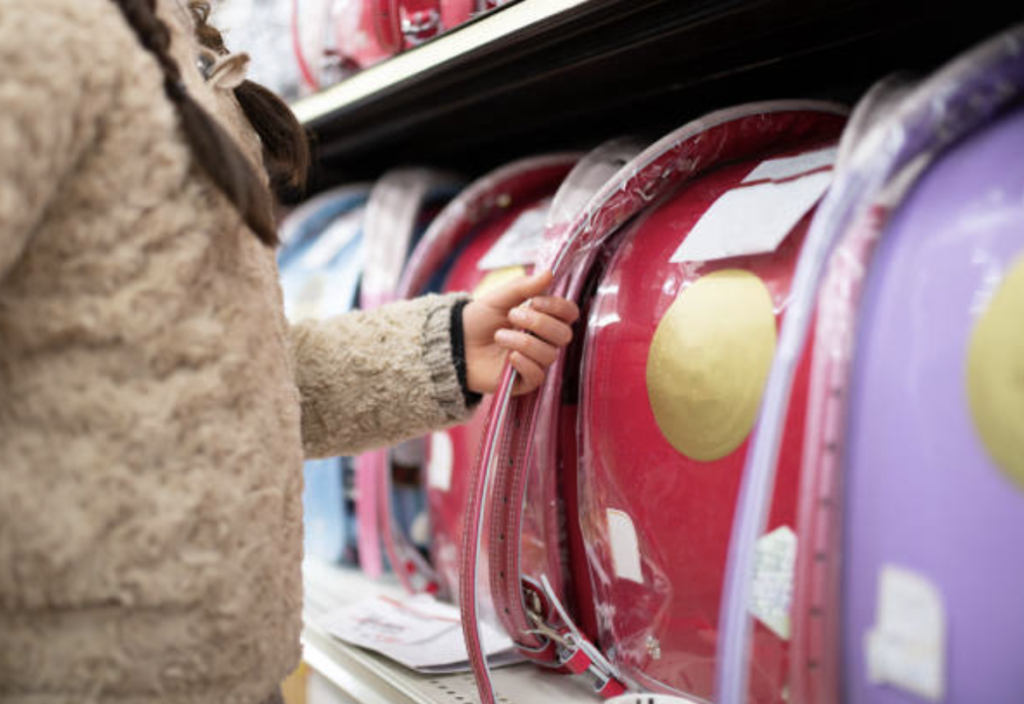
Many stores offer hands-on experiences where customers can actually try on a randoseru on their back and compare designs and features. Parents are expected to support their children’s choice, respecting their opinions while also taking practicality and safety into consideration.
Furthermore, the timing of selecting a randoseru is also important. Recently rankatsu early before the demand for randoseru increases, are becoming more common. Randoseru of particularly popular brands and designs can sell out early, and parents are increasingly moving in early.
- To give you a specific time frame, to my surprise, rankatsu start more than a year before entering elementary school. Our family just recently completed our rankatsu for our kid who will enter elementary school next year. This will be published as an article soon!
Where to Buy Randoseru
Randoseru can be purchased at a variety of locations. Below are some of the main places to purchase them.
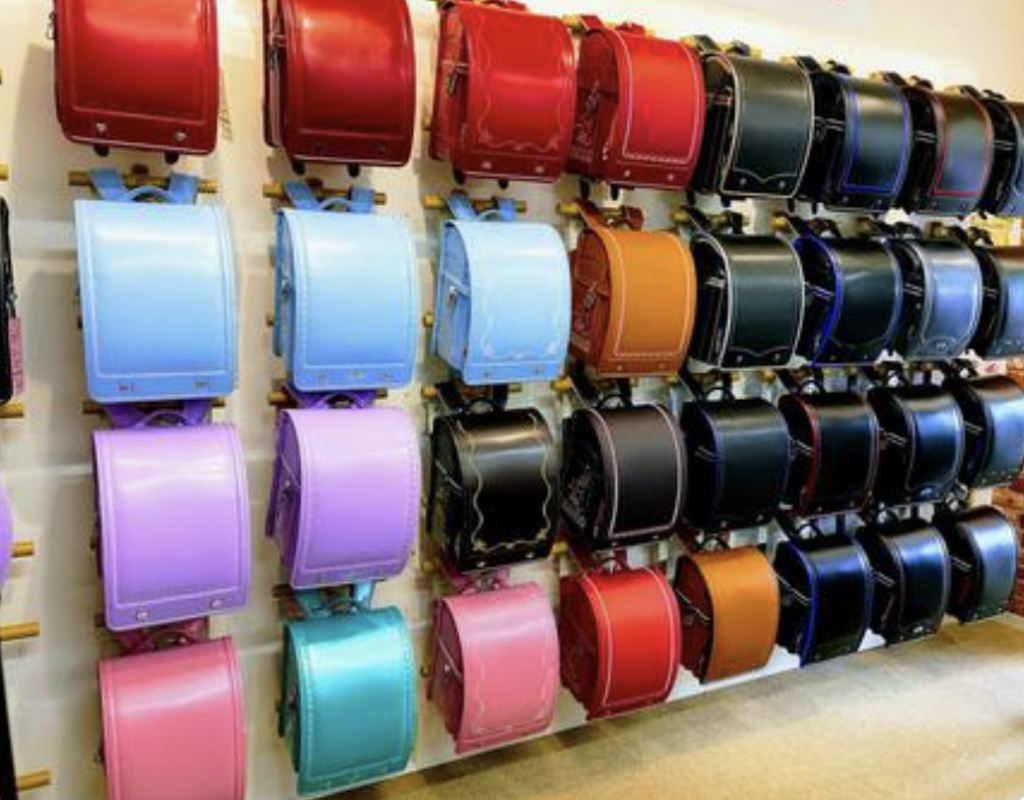
Randoseru Specialty Stores
Specialty stores carry a wide variety of randoseru and allow you to try them on for yourself. The staff at specialty stores can give you advice on how to choose the right one, so you can buy with peace of mind.
Examples:
Tsuchiya Kaban (Japanese) >>>
Ikedaya (Japanese) >>>
- Some randoseru specialty stores offer rental of samples of randoseru for a fee, for example, for two nights and three days. If you apply online, they will send samples to your home, making it very convenient for your kids to see and try on the actual school bags without having to go to the store.
Department Stores
Major department stores also carry randoseru. Especially from early spring through summer, there are randoseru sales areas in those stores where you can actually try on the bags and receive advice from professional staff.
Examples:
Takashimaya, Isetan, Mitsukoshi, etc.
Online Stores
Online shopping is also very popular. Online shopping sites allow you to compare and select school bags of various brands and designs, and you can easily place your order from the comfort of your home.
Examples:
Rakuten Ichiba
Amazon Japan
- Many online sites such as Rakuten and Amazon Japan, where many people buy their products based on reviews and other factors, offer the advantage of easy purchase, as many of them accept returns if conditions are met.
Major Mass Retailers
Large volume retailers such as Aeon and Nitori also sell randoseru. Many of the randoseru at these stores are relatively reasonably priced, and it is possible to actually try them on in the store.
Examples:
Aeon, Yodobashi Camera, Bic Camera, etc.
Outlet Malls
High-quality randoseru can also be purchased at outlet malls, where they are often available at discounted prices. Outlet products are often out of model or on display, but can be purchased at very reasonable prices.
Examples:
Mitsui Outlet Park, Yokohama Bayside Marina, etc.
Small Local Stores
Local bag stores and bag shops may also carry randoseru. Some local stores can also provide custom-made or customized products.
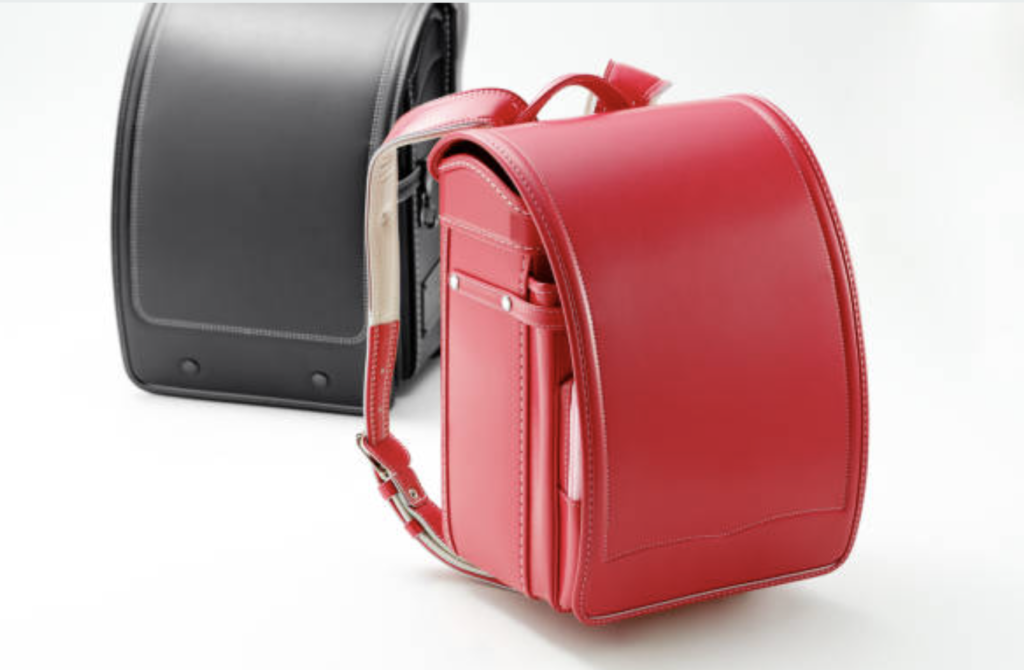
Features of Randosaeru
Children between the ages of 7 and 12 attend elementary school in Japan for 6 years. You may be wondering, “How can children that age use school bags for six years?
But there is no need to worry.
Randoseru can withstand such a long period of use because of their distinctive design and robustness.
Shape and Structure
Randoseru have a solid, square shape and are designed to fit snugly against the back. The shoulder straps and back are cushioned and designed to withstand long hours of commuting to school.
To make it easy for even a first grader to carry, the back of the bag has a firm cushion to prevent stress on the shoulders and back. This is designed to reduce child fatigue while commuting to school in Japan, where walking to school is the basic means of transportation.
Material
Traditionally, randoseru are made of durable materials such as “Clarino” or genuine leather. Clarino is man-made leather, which is lightweight and water-resistant.
Genuine leather, on the other hand, has a more luxurious feel and is characterized by the fact that it develops a certain flavor with each use.
Recently, various new materials have been developed, and a variety of randoseru made of lightweight and durable materials are now available.
Size
Randoseru are generally designed to hold A4-size textbooks and notebooks. The back portion is slightly wider, providing more storage space and efficient organization of all school supplies.
However, it will not hold lunch boxes, gym clothes, and other non-book items, so these will be carried to school using a separate handbag when needed.
3.2 Causes of Too Much Baggage
Design and Color
Randoseru are vary in color and design. For a long time, it was customary for boys to use black and for girls to use red. Recently, however, color variations have become more abundant, and children of both sexes now own school bags in their favorite colors.
Durability
Randoseru are extremely durable and are typically made to last for six years. If you purchase from a stores specializing in randoseru, there is often a warranty that includes free repairs in case of any malfunctions or defects during the six-year period. Because they are durable and long-lasting, they may be used by siblings.
- Incidentally, the randoseru I used in elementary school were made of hard old fashioned leather, and because it was not maintained, it was in tattered condition by the time I graduated.
Safety Considerations
Many modern randoseru are equipped with reflective materials, making it easier for cars and bicycles to notice them at night and enhancing safety. If the randoseru itself does not have reflective material, safety measures are taken by attaching a school bag cover like below.
Japan is a safe country, but some parents are using GPS that can be installed in randoseru in case of emergency.
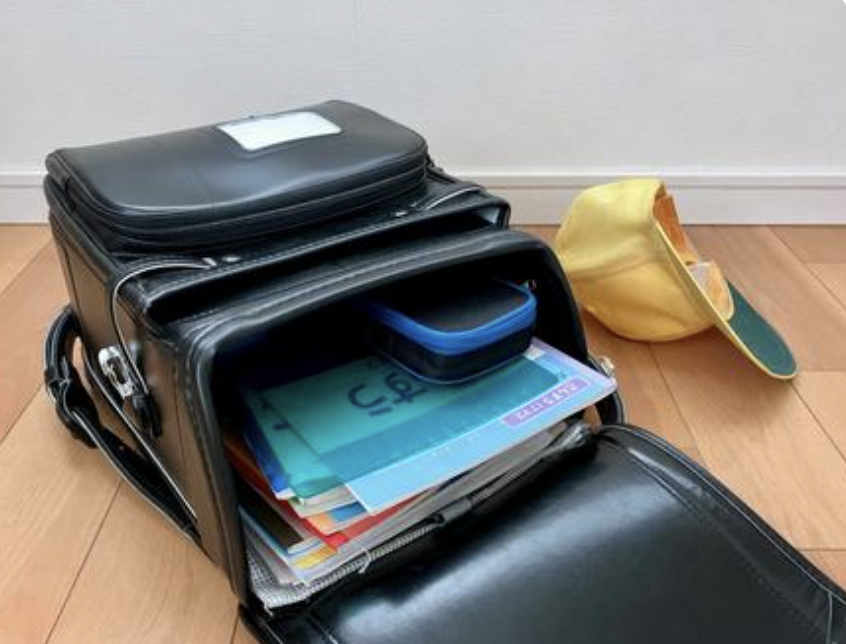
Challenges Facing Randoseru
In fact, the problem of too much belongings for Japanese elementary school students has been a longstanding issue and has received particular attention in recent years.
The amount of luggage carried by elementary school students each day can be very large, including textbooks, notebooks, tools, and gym clothes.
There is concern that this baggage problem can have a negative impact on children’s health and further burden them when commuting to and from school.
Negative Health Effects of Carrying Too Much Luggage
Carrying a heavy school bag every day can cause stiff shoulders, back pain, and other physical stresses. Especially for children in their growth stage, excessive burden may have a negative impact on their health.
Since many elementary schools in Japan do not operate school buses, children usually walk the distance from home to elementary school.
If this commute is a long distance, carrying heavy baggage to and from school can be very stressful for the children. Especially in areas where walking to school is the norm, this daily burden is seen as problematic.
- I have been submitting a request to the municipality in which I live for a school bus service, as walking to school can be dangerous! (No response yet..)
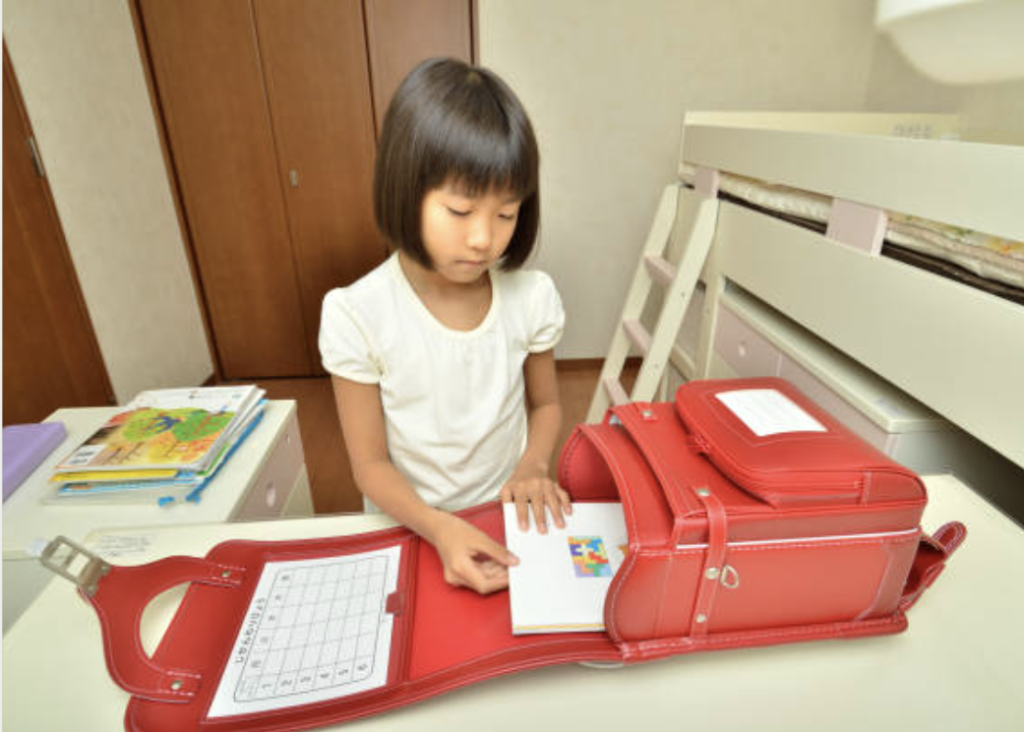
Causes of Too Much Baggage
Textbooks and Notebooks
In many Japanese elementary schools, each subject requires its own textbooks and notebooks. These textbooks and notebooks cannot be left at school and must be taken home traditionally.
- When I was in elementary school, I used to leave them at school secretly bacause I felt it was nonsense to bring them back home everyday.
- Incidentally, leaving textbooks at school is called “okiben” in Japanese slang. (Oki = leave, Ben = Benkyo (study goods)
Utensils for each Classes
If there are PE or music classes, they will also need to carry the necessary utensils for those classes. These need to be taken home by the children themselves on a regular basis, though not every day.
- Physical education equipment (gym clothes, shoes, etc.)
- Music equipment (instruments and music sheets)
School and Community Events
School events such as field trips and athletic meets require additional equipment (e.g., athletic shoes, change of clothes, hats, etc.), which further increases the amount of luggage.
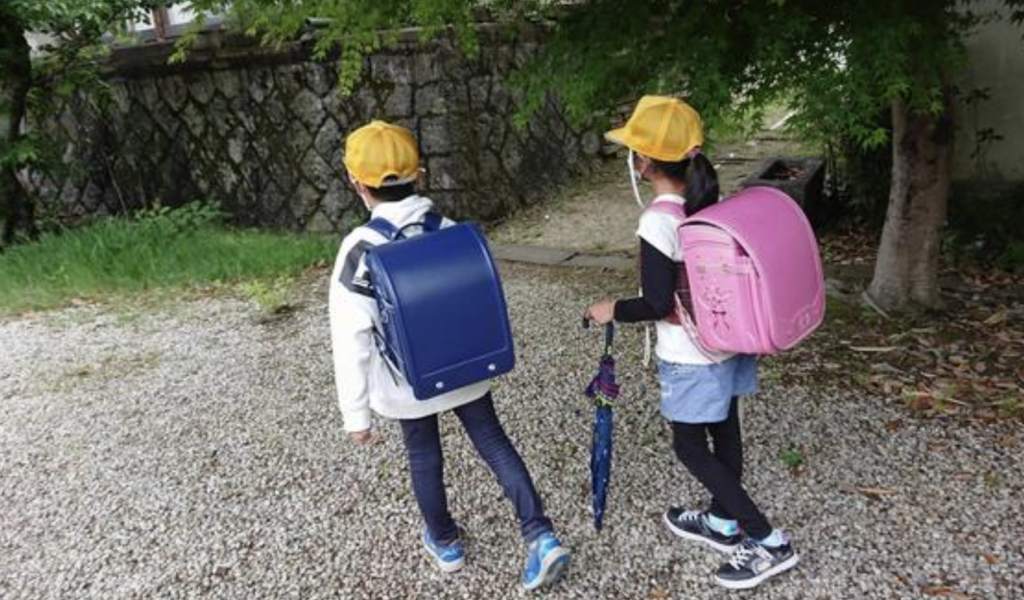
Solutions and Initiatives
Attempts to reduce the weight of hand luggage
Recently, efforts have been made to reduce the weight of textbooks and the size of notebooks. In addition, a rational system is being introduced whereby students take home only the necessary teaching materials for each subject and leave unneeded items at school.
Introduction of ICT
Some schools are using ICT (Information and Communication Technology) to reduce the number of paper textbooks by using tablets and electronic learning materials. This is expected to reduce the amount of luggage.
Efforts at Schools and in Local Communities
Some schools have devised ways to reduce the amount of luggage required for school bags, such as setting aside a day each week for students to bring home all the necessary teaching materials. There is also a movement for parents and schools to cooperate in reviewing how to manage belongings.
Still Rankatsu is Important
Although various efforts are being made in each elementary school and municipality, not all are yet completely safe. Against above background, it is extremely important to select a suitable school bag for the child through “Rankatsu“.
- However, it is by no means mandatory to go to school with a school bag. Today, there is a trend in Japan to emphasize diversity, and a great number of children have backpacks that are not randoseru. People are choosing school bags for their children’s elementary schools based on various backgrounds and what matches their children.
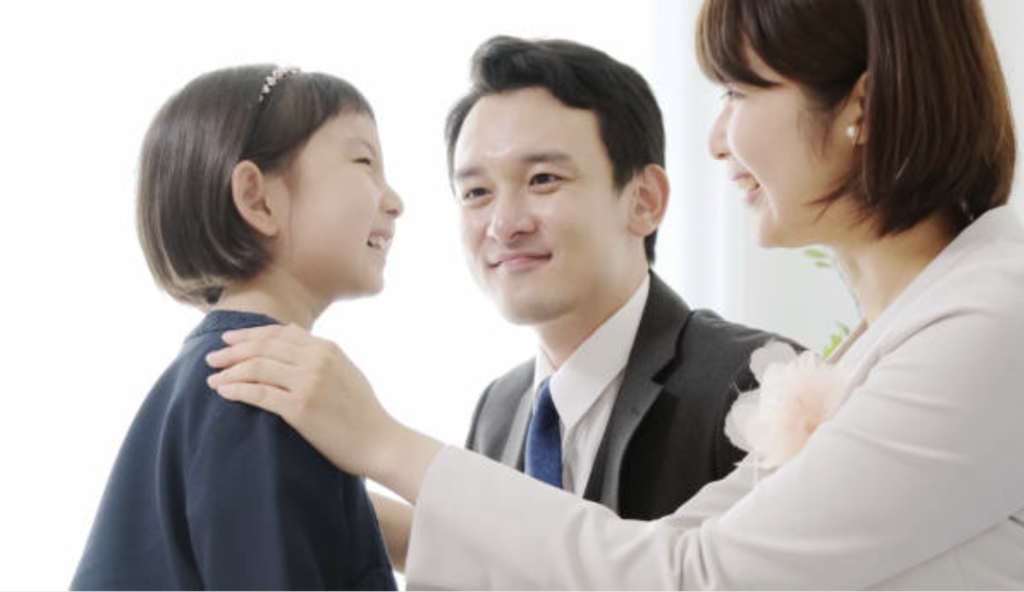
Final Note
Despite the various issues mentioned above, many parents still insist on purchasing school bags for Japanese elementary school students and their parents as a symbol of their children’s growth.
Randoseru are more than just bags; they are deeply rooted in the lives of Japanese elementary school children as a culture and occupy a very special place in Japanese educational culture. For a child, a randoseru is more than a “tool” for a new start, and for a parent, it is a “symbolic presence” that watches over the child’s first step into elementary school life.
For this reason, the Rankatsu between parents and children can be said to be an important ceremony in the process of parents watching over their children’s six years of growth.
For those who live in Japan, I hope this article will deepen your understanding of Randoseru. And for those who do not live in Japan, I hope it will be helpful to know that there are such interesting cultures in the world!


![[商品価格に関しましては、リンクが作成された時点と現時点で情報が変更されている場合がございます。] [商品価格に関しましては、リンクが作成された時点と現時点で情報が変更されている場合がございます。]](https://hbb.afl.rakuten.co.jp/hgb/45da11e8.2aafd7ae.45da11e9.e0dc4186/?me_id=1204953&item_id=10004690&pc=https%3A%2F%2Fthumbnail.image.rakuten.co.jp%2F%400_mall%2Flapiz%2Fcabinet%2Foriginal%2Frnd%2F26rnd%2Frmnrnd-s5.jpg%3F_ex%3D300x300&s=300x300&t=picttext)

![[商品価格に関しましては、リンクが作成された時点と現時点で情報が変更されている場合がございます。] [商品価格に関しましては、リンクが作成された時点と現時点で情報が変更されている場合がございます。]](https://hbb.afl.rakuten.co.jp/hgb/45d9e7bd.e91d35d9.45d9e7be.33f69618/?me_id=1263631&item_id=10001457&pc=https%3A%2F%2Fthumbnail.image.rakuten.co.jp%2F%400_mall%2Fringood%2Fcabinet%2Frpp4-2600-1.jpg%3F_ex%3D300x300&s=300x300&t=picttext)
![[商品価格に関しましては、リンクが作成された時点と現時点で情報が変更されている場合がございます。] [商品価格に関しましては、リンクが作成された時点と現時点で情報が変更されている場合がございます。]](https://hbb.afl.rakuten.co.jp/hgb/45d9edaf.fefb8917.45d9edb0.84efeddb/?me_id=1424162&item_id=10000857&pc=https%3A%2F%2Fimage.rakuten.co.jp%2Fkokuyogst%2Fcabinet%2F10329794%2Fimgrc0092213562.jpg%3F_ex%3D300x300&s=300x300&t=picttext)
「Randoseru: Traditional Backpack 6 Years Together」への1件のフィードバック